The Black-Bellied Whistling Duck, a waterbird of medium size, is easily identified by its gray-brown plumage and distinctive white eye-ring. Inhabiting freshwater marshes, these ducks are predominantly found in the southern regions of the United States, as well as certain parts of Central and South America.
The duck's ability to nest in tree cavities or man-made structures showcases its adaptability, a trait that allows it to thrive even in urban environments. During the breeding season, it exhibits the intriguing behavior of forming monogamous pairs, and communicates using a variety of vocalizations.
The Black-Bellied Whistling Duck's importance in ecosystems is underscored by its dual roles as a seed disperser and insect controller. However, threats such as habitat loss and hunting render its conservation crucial. Symbolizing resilience and adaptability, the Black-Bellied Whistling Duck continues to navigate changing environments.
Key Takeaways
- Medium-sized waterbird with gray-brown plumage and distinctive white eye-ring.
- Prefers freshwater marshes in southern US, Central, and South America.
- Forms monogamous pairs, nests in tree cavities, and migrates during winter.
- Faces threats from habitat loss and hunting, conservation efforts focus on wetland preservation.
- Communicates through vocalizations, important for ecosystem as seed dispersers and insect controllers.
Black-Bellied Whistling Duck's Range
The Black-Bellied Whistling Duck is a key inhabitant of shallow freshwater habitats, primarily populating the southern regions of North America, Central America, and the northern parts of South America.
Known for their presence in environments like freshwater bodies and farm lands, these ducks show a preference for lush surroundings that provide cover and nesting opportunities. Despite their tendency to stay put, a few have been spotted nesting in the Midwestern U.S., with rare appearances in the eastern U.S. and Canada.
The species' knack for adapting to various aquatic habitats has ensured stable numbers, demonstrating their resilience in a variety of American ecosystems.
Did you know? These ducks are known to form strong pair bonds and often mate for life.
California's Central Valley Wetlands
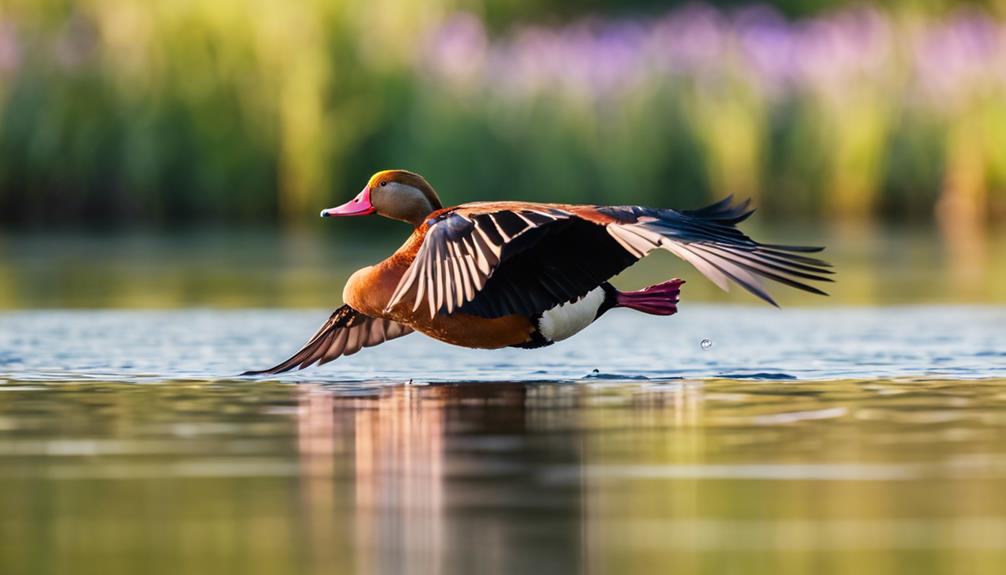
California's Central Valley is a vital haven for diverse bird species, like the Black-Bellied Whistling Duck. The Central Valley wetlands, a blend of freshwater bodies and farmlands, serve as crucial breeding, nesting, and feeding territories for this duck.
The duck feeds mainly on flora, arthropods, and aquatic creatures found in these habitats. This network of wetlands enhances the region's biodiversity, proving essential for the survival of many avian species.
Interestingly, the Black-Bellied Whistling Duck is one of the few duck species that have a musical whistle-like call.
Central Valley Wetlands Distribution

The Central Valley in California houses a complex of wetlands, integral for sustaining a variety of avian species. These wetlands, with their diverse ecosystems ranging from shallow freshwater bodies to marshlands and farmlands, serve as a pivotal transit point for migratory birds such as the black-bellied whistling duck.
Conservation programs are actively working to safeguard and rejuvenate these wetlands, thereby ensuring the continued existence of bird species reliant on this vital habitat. An interesting fact is that these wetlands also significantly contribute to improving water quality by filtering pollutants.
Winter Flocking Behavior

Black-bellied whistling ducks, a unique species of waterfowl, gather in large groups during the chilly season, a behavior known as winter flocking. This season sees a shift from their usual solitary existence to a more communal one. These groupings can range from a few hundred to several thousand members, presenting a captivating spectacle of unity.
They move as one, a testament to their adaptability and social acumen in navigating winter's hurdles. This behavior serves multiple functions: it provides a shield from predators, enhances food searching efficiency, and fosters social bonds among the ducks.
An intriguing fact about these ducks is their distinctive whistling call, from which they derive their name.
Adult Body Length
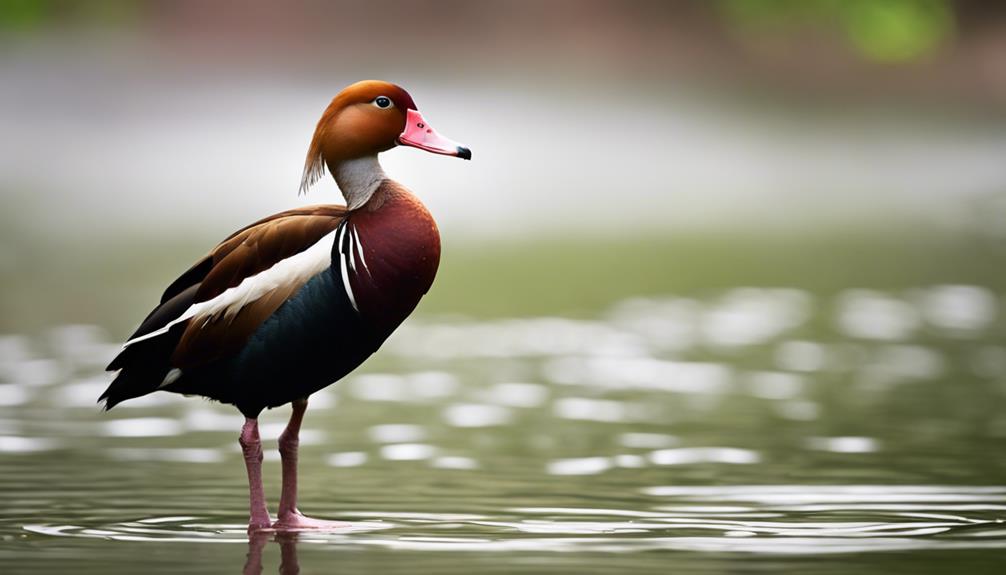
The black-bellied whistling duck, a medium-sized waterbird, measures 18 to 20 inches in adult body length, from bill tip to tail feather end. This mid-range size benefits the duck, aiding efficient travel and foraging in its terrestrial dwelling, as well as interaction with fellow avian species.
Studying the length of these waterbirds offers a deeper understanding of their life sciences and importance in swamp and marsh landscapes. Interesting fact: despite their name, black-bellied whistling ducks have a unique, high-pitched whistling call rather than a traditional quack.
Gray-Brown Feathered Appearance
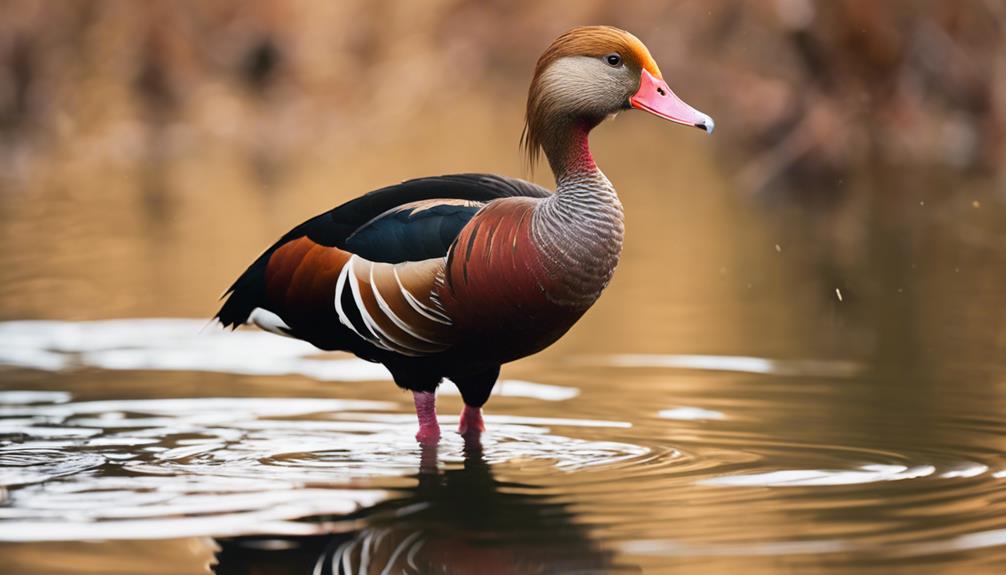
The black-bellied whistling duck, a medium-sized aquatic bird, boasts a unique gray-brown plumage. This color scheme, primarily gray-brown, offers a muted elegance to the duck's physique. These hues, serving as natural camouflage, blend with the marshes, lakes, and pond habitats, aiding in the bird's survival tactics such as food search and predator evasion.
This subtle blend of colors not only has a practical utility but also adds to the visual appeal of this water bird, making it a captivating sight in its wetland home. Interestingly, despite its name, the black-bellied whistling duck is not black, but gray-brown, a testament to the often misleading nature of common names in the avian world.
Distinctive White Eye-Ring
The black-bellied whistling duck, known for its unique white band around the eye, stands out among its feathered kin. This particular waterfowl, adorned with a stark white ring, provides a stunning contrast to its dark feathers. It's a key identifier for bird enthusiasts trying to spot this specific species in the wild.
The white band around the eye doesn't only add to the duck's visual appeal but also plays a functional role in its appearance. Did you know? This feature is unique to the black-bellied whistling duck among the duck species.
Plumage Color Variation
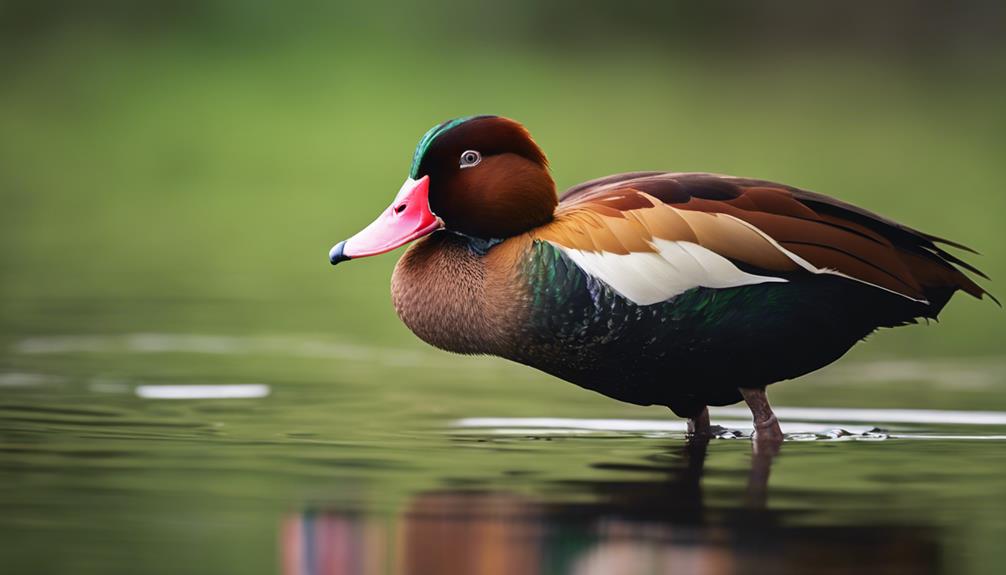
The plumage color of the black-bellied whistling duck varies significantly, enhancing its visual appeal. These waterfowl display a spectrum of hues, from a cozy chestnut brown to a bold black, with a delicate iridescent greenish-black gloss adding to their splendor. Here's a table to illustrate the observed color differences in various communities of these ducks:
| Variations in Feather Shade | Explanation | Affected Group |
|---|---|---|
| Warm Chestnut Brown | Regular in the southern-based avians | Communities in the south |
| Black Tinted with Green | Observed in those from cooler, northern habitats | Groups up north |
| Grayish-Brown | Most common shade seen | Spread across all geographic locations |
Interestingly, despite their name, not all black-bellied whistling ducks have a black belly, some display a grayish-brown shade.
Whistling Calls and Behavior
The distinctive whistling calls of the black-bellied whistling duck, a waterbird species, play a pivotal role in its behavior and interactions within its natural environment.
These calls act as a means of communication between the ducks, sending signals of danger, calling out for partners, and demarcating their territories. The waterbirds use this unique sound to keep their flock united and coordinated during group activities like food search and nest building.
During mating periods, these whistling calls turn into a crucial instrument of courtship and pair bonding, helping the ducks to identify and draw in potential partners.
An interesting fact about the black-bellied whistling duck is that unlike many other duck species, they often perch in trees and are known to form monogamous pair bonds that can last for several years.
City Park Observation Opportunities
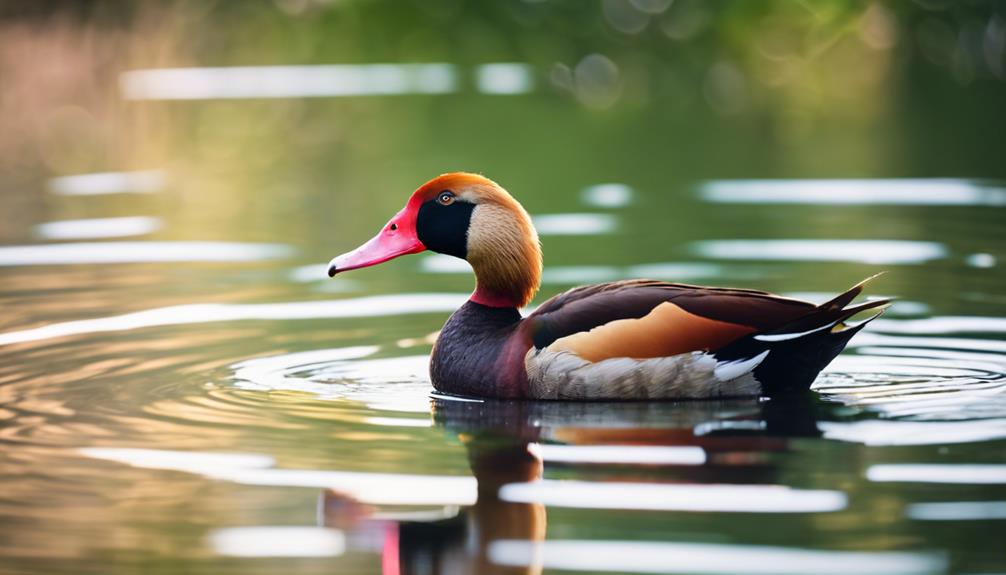
In city parks, one can spot black-bellied whistling ducks. These waterbirds, identifiable by their pink bills, gray heads, and gray-brown feathers, favor shallow freshwater zones like ponds, lakes, or marshlands. Their sociable nature often leads them to form small groups, particularly around meal times.
Their unique whistling calls and feeding habits offer a glimpse into their interesting lives. An intriguing fact about these birds is their monogamous mating habit, often pairing for several seasons. Bird enthusiasts visiting city parks will find observing these birds a rewarding experience.
Urban Duck-Watching Spots

Urban areas such as large cities often have spots optimal for observing the black-bellied whistling duck, a stunning species of waterfowl. These include:
- The green oasis in the concrete jungle, New York City's Central Park, is a magnet for bird lovers and serves as a habitat for a variety of avian species, including the black-bellied whistling duck.
- In California, Oakland's Lake Merritt, a sanctuary for birds in the midst of urban life, hosts a diverse range of winged creatures. Among these, the black-bellied whistling duck can be seen.
- Nestled in the urban matrix of Austin, the reservoir known as Lady Bird Lake is a common haunt for wildlife enthusiasts. Here, one might occasionally spot the black-bellied whistling duck.
Interesting fact: Black-bellied whistling ducks are known for their unique whistling call, a characteristic that sets them apart from other waterfowl.

